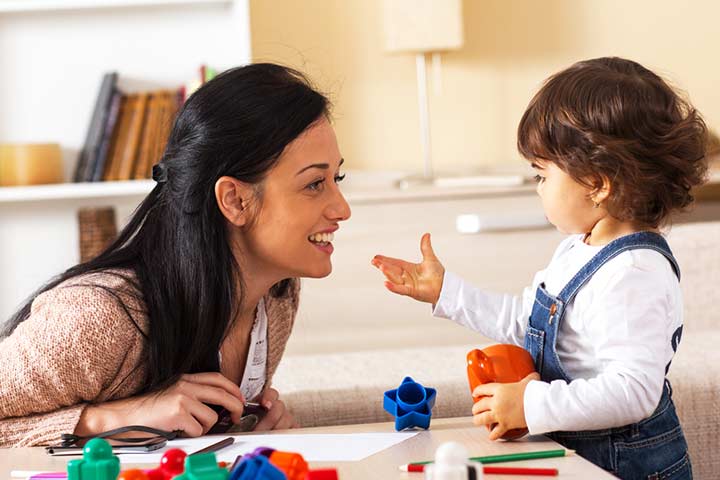
Image: Shutterstock
After your child is born, every little milestone brings you joy and excitement. As a parent, you look forward to many firsts of your child. The first time they grab your finger, rollover, follow you with their eyes, laugh or smile when they see you are moments you live for. For a year after your baby is born, you consult your pediatrician to observe your baby’s developmental milestones. While children cross these milestones at their own pace, most children can do a few characteristic traits. Their social and emotional milestones include being able to recognize when their dad or mom leaves, hands you a book they want you to read, reacts to sounds or noises, repeats them to gain attention, puts out arms or legs while dressing them up, and recognizes their favorite things or people (1).
They also start to respond to simple gestures and words like “no” or “bye”. Babies begin to say words like “mamma” or “dadda”. Most of the time, these are one of the very first words a child says. They also try to imitate words you say. They can follow simple instructions and can identify the right thing or picture when it is named (2). With physical development, babies can sit without help, stand alone, or even walk alongside furniture by holding on to it.
Milestones At 18 Months
Image: Shutterstock
After your baby crosses one year, you cannot help but notice how fast they reach other developmental milestones. They are referred to as toddlers by this point. They need plenty of sleep and rest. Research shows that toddlers develop better and faster when they feel safe and loved. They start walking by the age of 12 to 15 months. Some may take a little longer, and that is entirely normal. They might even begin to climb furniture and other surfaces with practice (3).
Toddlers also show signs of embarrassment, hold out their hands when you tell them to, and even recognize their own names. This is the age when you need the most amount of energy because toddlers love to explore, and you have to keep an eye on them constantly. They are in the age where they can hurt themselves often because they like to grab onto things, climb stairs, furniture, and recognize their own name (4).
Your Baby At Two Years
Image: Shutterstock
After 18 years, your baby’s development is relatively slow compared to the first 18 months of life. When they hit the 24-month mark, they are more or less likely to eat with a fork and try to undress by taking off their socks, shoes, and clothes without buttons. As they grow up, they start to show more emotions. They feel more shame, anger, embarrassment, and do things you tell them not to do. We bet you can relate, toddler parents!
By two years of age, they often throw temper tantrums because they are still learning how to deal with the emotions they are experiencing. The separation anxiety that they experience slowly eases after 18 months. By 24 months, you will notice that it becomes less intense. Remember that it is vital that your toddler gets sufficient sleep. Your toddler’s language skills develop, and they start to describe things they see, recognize colors, name things, animals, parts of their body, and animal sounds (5).
Image: Shutterstock
You don’t want to miss out on these developmental changes in your baby because you miss them forever once you miss these milestones. A few things to keep in mind are that you should encourage your kids and cheer them on for their little accomplishments. Always make them feel loved and give them hugs and kisses.
If we helped you understand your baby’s milestones a little better, share this article with your friends and family.















